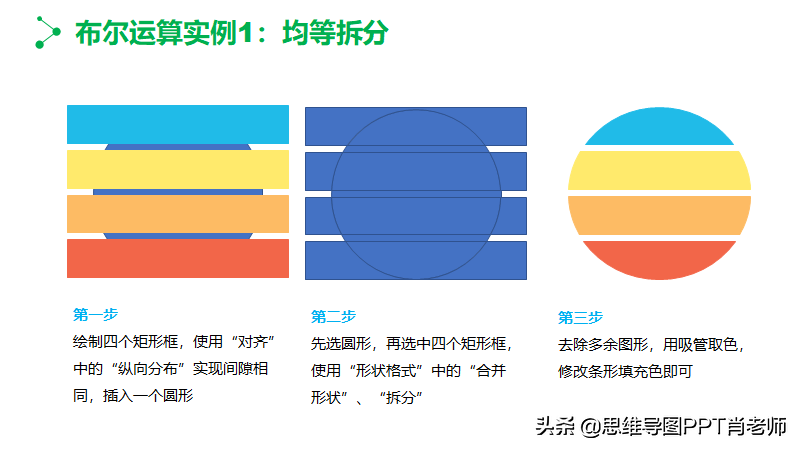今日学习词法:冠词。
a. 不能单独使⽤,只能⽤于名词之前帮助说明名词所指的⼈或事物的词;
b. 属于限定词(限定名词数量多少或特指等的词)的⼀种。
冠词的分类:“
一 不定冠词: a, an(one的读⾳弱化)
冠词的读⾳:
不定冠词在元⾳⾳素前(不是元⾳字⺟)前⽤an,其他情况下⽤a:(连读⽅便)
1: an American(⼀个美国⼈)
2: an honor/hour(⼀种荣幸/⼀⼩时)
3: an eye for an eye(以眼还眼)
4: a university(⼀所⼤学) ([ˌjuːnɪˈvɜːrsəti] 为辅⾳因素j开头)
5: a great show(⼀次很棒的演出)
6: a tooth for a tooth(以⽛还⽛)
(1) 表示类指:泛指人,事或物类别中的一个代表。
1. a car is a machine that can run.
2. I have an orange bike.
(2) 表示数量“一“ “每一”或“任何一”。
1. I have a mouth, a nose and tow eyes.
2. We study 8 hours a day.
(3) 用于序数词或形容词最高级前。
1.) 序数词不表示顺序,表示”又一” “再一”时用a
Why do you carry a second arrow.
2.) 最高级表示最高级含义,表示”非常”时用a
It is a most usefull book for middle school students.
(4) 表示某种景象:世界上独一无二的sun,moon,world,sky等被一个描绘性形容词修饰时
a burning/hot/newly-risen sun
a bright/full/new moon
a dark/free/new/sad world
a bright/blue/clear/cloudless/dark/sunny sky
(5) 用于特殊结构中
1.) “a(an) + 单数名词 + of + a + 单数名词”(of 前后的名词时同位关系)
an angel of a wife 天使般的妻子
a fool of a man 傻里傻气的人
a poem of a night 一个诗一般的夜晚
2.) “of a + 名词”表示不同事物的共性,意为“相同”
These machines are of a kind. 这些机器都是同一类型的。
(6) 专有名词前面
1.用于人名前:
用于姓名前,表示 “具有…特征的人” “……的作品”。
I wish to become an Edison.
在一个带称号、称呼、头衔的“姓”前,意为“一位姓…的小姐/先生”,表示说话人对此人不认识。
A Miss Chen came to see you this morning.
2.用于人物 地名前,表示“某种样子的某人”或“某时的某地”
He is now a different Tom from what he was before ・
Did you ever dream of such a Paris?
3.用于一个带修饰语的时间名词前,表示一时的特点;有时不带修饰语,表示不确指是哪一个。
It was a hot August.
His birthday is on a Friday next month but Fm not very certain about it.
4.用于品牌名称前,表示这个牌子的商品。
He's going to buy a Ford. 他打算买一辆福特汽车。
I’ve got a Canon 30D. 我有一架佳能30D照相机。
(7)用在某些物质名词前:
当不可数的物质名词表示大类别中的某一种(小类指)时,可与不定冠词连用:
①指用这种材料制成的物品,表“一种”、“一类”、“一份”。例如:
a glass 一只玻璃杯 an iron 一个熨斗
a clean cloth 一块干净的布 a paper 一份报纸
② 指食品、饮料的“一份”。例如:
a chocolate an ice-cream a beer a sandwich
a good breakfast a big dinner a good cheese
③ 在某些表示自然现象的名词前,意为“一场”、“一阵”。例如:
a shower a heavy rain a thick fog
(8)用在抽象名词前:
①表示“ 一种”、“一类”、“一次”、“一例”等。
Physics is a science, but painting is an art.
The girl has developed a love for poems?
Do you care for a smoked?
After a swim^ she had a rest.
有时被形容词修饰或被一个of短语限定,具有特定概念。
You have a good memory.
When he was young, he received a good education.
A knowledge of English is a must.
Let's make an analysis of the situation.
② 表示一次动作:用于动词转化来的抽象名词前。
have a go 试一试 make a move 走一着(棋),移动
take a step 走一步 give (sb.)a lift 让(某人)搭便车
③ 表示某种情绪。例如:
It’s a shame to behave like that.
It’s a pleasure for me to work with you.
He spoke with an enthusiasm which inspired us all.
有时用”a certain +抽象名词”这一结构表示。例如:
a certain coldness a certain honesty
a certain reluctance a certain unwillingness
④ 用于表时间、距离、金钱的复数抽象名词的结构中:
a full eight hours 足足8小时
a busy two weeks 忙碌碌的2周
a good five kilometers 足足5公里
a good ten dollars 整整10美元
二 定冠词:the(that的读⾳弱化)
冠词的读⾳:
a. 定冠词the读[ðə],在元⾳前读[ði]:(连读⽅便)
1:He’s the author of the book. (他是这本书的作者。)
2:He was the greatest sculpture of that time. (他是那个时代最伟⼤的雕塑家。)
b. 特别强调时读[ði:]:(强读⾳突出唯⼀性)
“His father was Zeus. The Zeus. King of the gods.”—( “他的⽗亲是宙斯。就是那个宙斯。众神之王。”)
1)用于类指:定冠词加单数名词,指整个类别。例如:
The cow is a useful animal.
This is easier for the teacher than for the student.
2)用于特指:
① 表示上文已提到过的人或物,或说话人和听话人都知道所指的是何物。例如:
I own a dog and a cat. The dog is brown and the cat is white.
In this town there are two churches;the churches are old.
② 用在带限制性定语修饰的个体名词前,指特定的人或物。例如:
The girl in charge of the work is very active.
This is the novel I want you to read.
说明:如果被描绘性定语修饰,说明其性质或类别,则不用定冠词。例如:
This is a novel that every student cf English should read.( 一种,一类)
I hate to see letters written in pencil.(名词复数不加冠词)
③复数个体名词前加定冠词有不同含义:
The birds are singing in the woods.(表特指)
They are the teachers of our school. (表类指,强调某个特定团体的全体。其含义比
复数名词前不加定冠词表类指时更具体)
Once in a while we go to the parks.(指该范围内的任何一个)
3)用于独指:指世界上独一无二的东西。例如:
the air the earth the moon the sun
the sky the world the universe the atmosphere
如这类名词前被描绘性形容词修饰,则用不定冠词Q例如:
a cold wind, a big red sun, a new moon, a stormy-looking sky
4)说“我们中几人”、“你们中几人”时,常在数词前加定冠词。例如:
The last bus had gone, so the three of shared a taxi.
It was up to me to get the four of us moving.
5)用在形容词前:
①用在名词化的形容词、过去分词前,泛指一类人或物。例如:
the poor the rich the old the young
the sick the dead the blind the wounded
the good, the beautiful and the true 真善美
the unknown未知的世界 the unemployed失业者
the disabled 残疾人 the accused 被告
注意:此时仍具有形容词的特征,可被副词修饰,有比较级和最高级的词尾变化。
The extremely old need a great deal of attention.
The wise look to the wiser for advice.
②用在关于国家和民族的形容词前,泛指这个国家和民族的全体人员(这些形容词是以-sh,-ch,-ese结尾的)。例如:
the Chinese the English the French the Japanese
③说两个人或物中“较为…的”,用形容词比较级,比较级前加定冠词,起特指作用。
He is the taller of the two children in his family.
Tie heavier of the two bags is full of bottles of water.
用于 all the better, all the worse, all the more >.., none the + 比较级”等中,表示“因某事而更……”。例如:
As the hour approached, she grew all the more nervous.
He is none the happier in spite of our efforts to cheer him up.
④用在形容词最高级前。例如:
Helen is the prettiest girl I have ever seen.
This is the best advice I can give you.
6)在序数词及 last, next, only, same, right, wrong 前。例如:
February is the second month of the year.
the last month the only one the same school
the next story the right answer the wrong way
7)在表示乐器的名称前,或表示传媒和通讯的名词前指大众传媒和通讯。例如:
Do you like to play the guitar or the violin?
I play the violin, but not the piano.
A large part of Linda's day is spent on the telephone.
He sent his books through the mail.
常见的表传媒的名词有Me air;the mail;the post;the newspaper;the telephone; (the) radio;(the) television 等。
8)表年代或约略年龄,在逢十的复数数词之前加冠词。例如:
In the 1870S when Marx was already in his fifties, …
That fellow doesn't look his age- I think he’s somewhat in the thirties.
9)表方位:在方位、方向名词前或某些表时间的词组中。例如:
on the left (right) in the east (west)
the North and the South at the present
in the end in the daytime
但是,方位词用作状语时,前面不加冠词。例如:
My bedroom window faces south.
10)表示计量标准,其结构为”by the + 单数名词”。
Sugar is sold by the pound/grand.
He is paid by the hour/day/week/mouth.
11) 表人体部位:在身体部位名词前代替物主代词,其结构是:
及物动词+宾语+介词+the+身体部位
(笼统的内容) (具体的内容)
The ball hit the boy on the nose.
He took the thief by the collar.
有时代表人体的某个部分。例如:
The spirit is willing,but the flesh is weak. 心有余而力不足。
A tooth brush is used to clean the teeths·
12)用在某些与动词同形的名词前,构成词组。例如:
The number of students has been constantly on the increase.
They came to the rescue.
on the rise在上涨中
on fall在下跌中
on the march在行进中
13)用在专有名词前:
①用在江河、海洋、山川、群岛、港湾等的名词前。例如:
the Changjiang River
the Pacific(Ocean)
the Rocky Mountains
the Himalayas
the English Channel
the Red Sea
the Philippines
the Gulf of Mexico
说明: ①湖名前一般不加冠词,如Lake Baikal(贝加尔湖),Lake Michigan(密
歇根湖),Lake Victoria(维多利亚湖),但也有加冠词的,如the lake of Geneva(日内瓦湖),the Great Salt Iake(大盐湖)。中国的湖名,不论音译或意译,前面往往有“the",如:the West Lake(西湖),the Dongting Lake(洞庭湖),但也可说Lake Dongting,Lake Taihu。
②孤岛与单独的山峰前不加定冠词。例如:Taiwan Island台湾岛 Mt. Ali阿里山
② 用在由普通名词构成的专有名词前:
A)用于国家、党派、组织团体。例如:
the United States the Communist Party of China
the United Kingdom the Ministry of Education
the Xinhua News Agency the Associated Press 美联社
B)用于某些公共机构:旅馆、博物馆、剧院、建筑物等名称。例如.
the British Museum the Philadelphia Orchestra
the Pentagon五角大楼 the Hilton (Hotel)
the Science Museum the Louvre (Palace)
the Great Wall the Grand Theatre
the Beijing Hotel the Capital Cinema
说明:①常见于"the; + 地名/人名 + hotels/restaurants/ pubs/cinemas/theatres/
museums”这一结构,但Peace Hotel前不加冠词。
②在"地名或人名 + airport/station/univErsity/woo/castle” 前常不加冠词 ₒ
C)用于报刊、杂志、学校、历史朝代、三军、船只等前。例如:
the Peopled Daily the Times(泰晤士报》
the University of Beijing he Song Dynasty
the Air Force the Titanic泰坦尼克号
但是:Beijing University London University
Life《生活》周刊 China Pictorial《中国画报》
Time《时代》周刊 Newsweek《新闻周刊》
③ 在姓氏复数形式前,表示全家人,或这一姓氏的夫妇俩。例如:
The Turners are sitting at the breakfast table.
The Bakers will leave for New York tomorrow.
④用在人名或地名前:人名或地名被of属格或后置定语修饰,转化为普通名词时,表示
别的人或物具有该专有名词的特质。例如:
He is the Newton of today, 他是当代的牛顿°
This is not the Smith I was thinking of. 这人不是我想到的那个史密斯。
Suzhou is the Venice of China, 苏州是中国的威尼斯。
14)在物质名词或抽象名词前:
①当物质名词或抽象名词被一个后置定语修饰时。例如:
The breakfast we had today was wonderful.
People admire the honesty his speech.
What do you think the advice she gave you?
②虽没有后置定语,但根据上下文,对话双方对所谈内容都已明了时。例如:
The coffee was all right,but the cream was sour.
What do you think of music?
He asked me to go for a walk,but I don't think I’ve got the energy.
③与复数的物质名词或抽象名词连用,表示种类多或量大。例如:
The of this plantation are of very good quality.(各种茶)
Have heavy rains done your house any damage?(大雨)
His house was damaged by the high winds. (狂风)
三 零冠词(不用冠词的情况)
1)下列意义的专有名词前,一般不加冠词。
凡指一人、一地或一事物所专用的表示独指意义的专有名词,如人名和地名和以人名或地名命名的路名和街名、广场和公园、车站和桥梁、学校和教堂等。
•人名 和地名:Mt. Smith, China, Beijing, New York, ( North)
America, (Central) Australia, (Northern) Florida, Lake Michigan
•路名和街名:Nanjing Road, Zhongshan Road, Fifth Avenue,
Downing Street, Madison Avenue, Park Lane, Oxford Street
•广场和公园:Tian An Men Square, Trafalgar Square, Zhong Shan
Park, Hyde Park, Greenwich Village, Central Park
•车站和桥梁• Beijing Railway Station, Paddington Station, Beijing
Airport, London Bridge, Waterloo Bridge
•学校和教堂:Beijing University, Oxford University, Holy Mother
Church, Westminster Abby
2)物质名词用于类指时,前面不加冠词。
物质名词是指各种材料、食品等无法分为个体的实物,如beef,coffee, gold, ice, metal, milk, oil, silk 等。
Sugar is bad for you.
Snow melts when heated.
即使有描绘性定语修饰,也不加冠词。
Fresh water is scarce in some countries.
It is pleasant to walk in fresh snow.
但被限制性定语修饰,表特指或表示某物质的某一具体部分时,要加定冠词。
The sugar you bought yesterday has got damp.
The father and the son walked slowly on the soft snow.
当不可数的物质名词表示大类指中的某一种(小类指),表示”一种”、“一类”、“一份”等,可与不定冠词连用。
The North Sea produces a light oil.
This is a very good coffee.
3)抽象名词用于类指时,前面不加冠词。
抽象名词是指表示品质、行为、状态、感情或其他抽象概念的名词,
如action, pleasure, history, love, friendship, literature 等°
Wisdom is better than strength.(常用单数抽象名词)
There's no need for apologies.(复数抽象名词表复数含义)
抽象名词前有描绘性定语修饰,使概念缩小,仍不加冠词。例如:
Japanese history American literature
Real friendship is more valuable than monoy.
若其后的修饰语表示“ 一种”、“ 一类”时,可用不定冠词。例如:
It's a pleasure for me to work with you.
Have you made a thorough investigation of the case?
若其后的修饰语有特定的概念时,须加定冠词。
It is a long time since I had the pleasure of seeing you.
The love of money is the root of all evil.
4)个体名词复数用于类指,不加冠词。
African elephants have larger ears than Indian elephants,(指该类别的整体)
Tourists are often blamed for changing the character of a place.(指所有旅游者)
On the news today, there were reports of heavy snow in that area.
今天的新闻里,有关于那个地区大雪的报道。(指此类大雪报道是新闻的一部分)
5)个体名词抽象化后,前面不加冠词。例如:
They go to church every Sunday morning.
The trees were all in flower.
6)季节、月份、星期、节假日、一日三餐名称前不加冠词。例如:
spring summer March Sunday
May Day National Day Children's Day Women's Day
Spring is the best season of the year.
说明:①英语中用“…Day”表示”某某节”时,往往不加冠词。但我国的传统
节日常用“the ... Festival”表示,则要加冠词。例如:
Mid-Autumn Day 中秋节 诚 Mid-Autumn Festival 中秋节
the Spring Festival 春节
② 季节名词被一个限定性定语修饰时要加冠词。例如:
He joined the army in the spring of 1992.
③ “秋季”英语用autumn,美国英语用fall;泛指时,autumn前的the可有
可无,但在fall前必须加theₒ例如:
They keep a few cows in (the) autumn/the fall.
④ 一日三餐名词前带有形容词修饰时,可与不定冠词连用。例如:
He had a rich/a late breakfast.他吃了 一顿丰盛的/很晚的早餐。
7)当时间名词(日、夜、早、晚、周、年等)表示抽象意义或一般意义时前面不加冠词。例如:
Her hair is as black as night.
Morning is the best time for work ・
At this time of year even the lake is frozen over.
Towards evening he came back.
It was late afternoon before he reached home.
但表示特定的时间概念或某一段特定的时间前则须加冠词。例如:
He usually gets up early in the morning.
in the year 2005 the year after next
8)表示称呼、家庭成员、身份、头衔的名词前一般不加冠词。例如:
What’s this, Mother? Thanks a lot, doctor.
Premier Zhou Professor Liu
Aunt is taking Sister out for a walk*
某个独一无二的身份或职务(即只有一人担任此职务或正职)作表语、补语或同位语时:
He is head of the organization.(表语)
Lincoln was made President of the United States again.(补语)
This is Mr. Zhang, director of our hospital.(同位语)
Three cheers for you, winner of the Gold Medal! (独一无二的身
份作同位语)
说明:①表示某个类别中的一员,使用不定冠词。例如:
John has asked Dr. Brown, a Jamous lawyer^ to represent him in court.
②有时,用不定冠词或不用冠词含义是不同的。例如:
He is a dean of the department.(意为该系有几个主任)
He is dean of the department.(意为他是唯一的一个主任或他任正职)
9)学科、疾病名称、球类、棋类,语言类,表颜色的名词前不加冠词。例如:
Do you study mathematics^
Cigarette smoking can cause lung cancer.
He likes playing football/chess/bridge.
Can you speak Chinese/Engish/French?
Red is my favourite colour.








